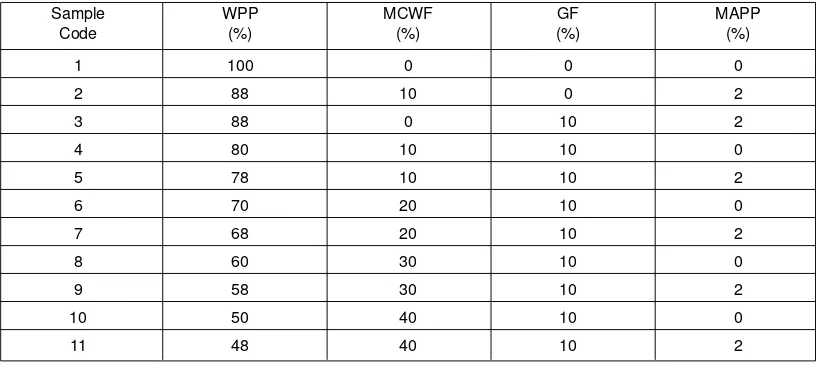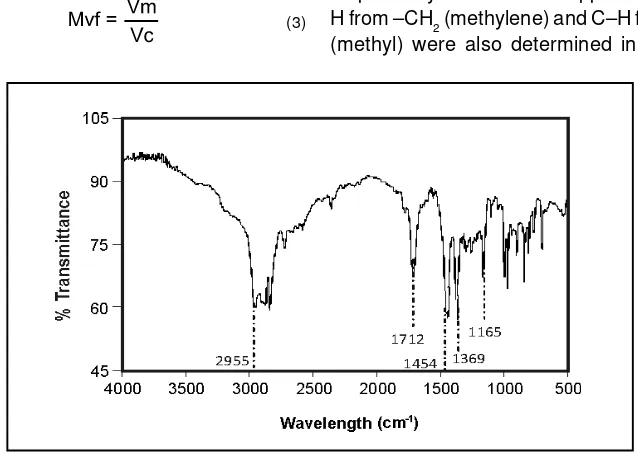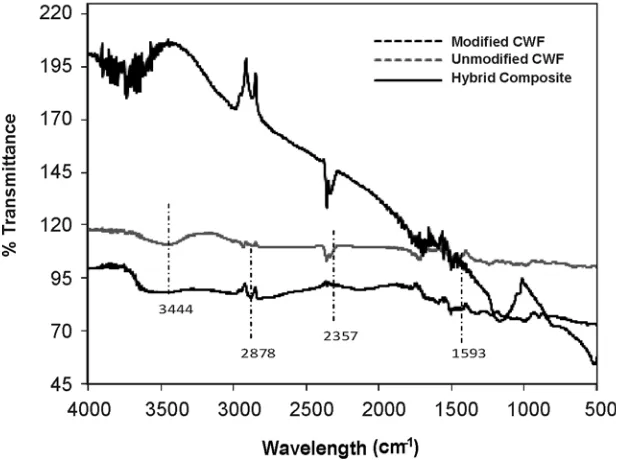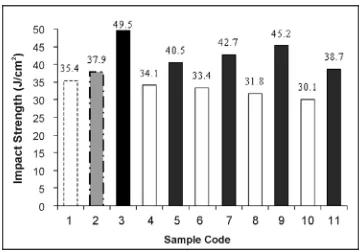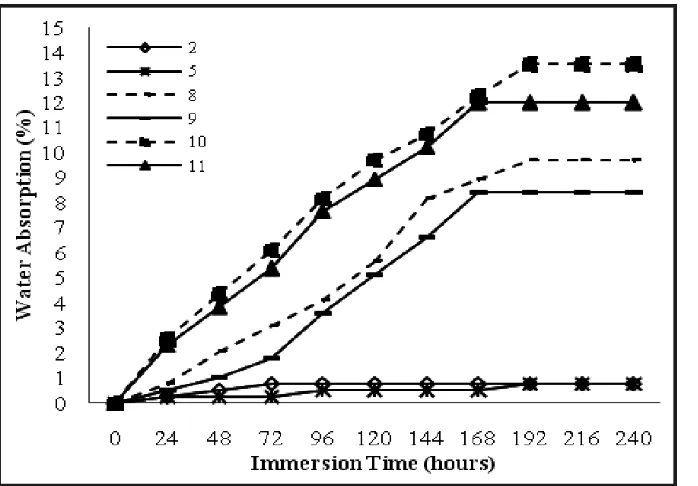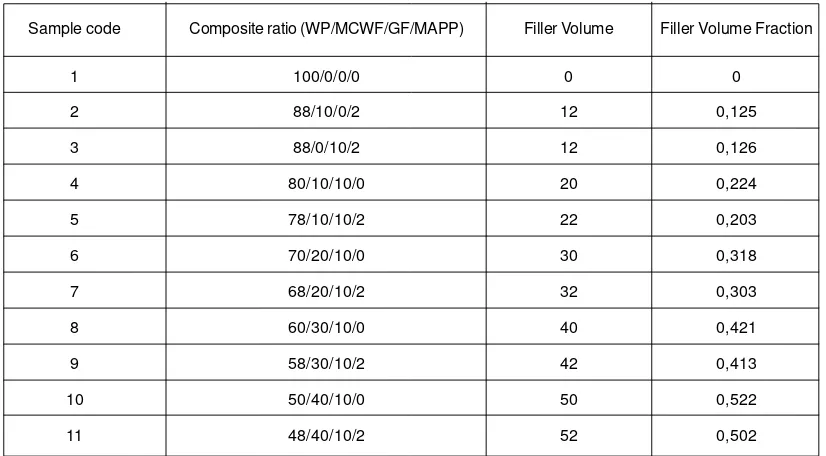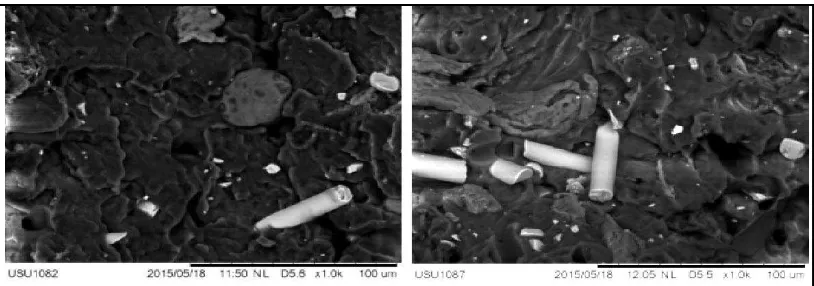Journal of Polymer Materials : An International
Journal
ISSN: 0973-8622
e-ISSN: 0976-3449
Subject: Chemistry
Periodicity: Quarterly
Month(s) of Publication: Mar., Jun., Sept. & Dec.
Current Volume: 33 (2016)
Chief Editor
Prof. Sukumar Maiti , Subarnarekha, J-23 Bidhannagar, Midnapore 721101,
West Bengal
Editor
Prof. S. K. Dolui, Department of Chemical Sciences, Tezpur University,
Tezpur
Co-Editor
Dr. Dibyendu S. Bag, Polymer Science Division, DMSRDE, Kanpur
Editorial Board
Charles E. Carraher, Florida Atlantic University, USA
Ben Zhong Tang, Hongkong University of Science & Technology
Tamaki Nakano, Hokkaido University, Japan
Advisory Board
A. Kumar, Tezpur University
A. K. Saxena, DMSRDE, Kanpur
Akhil Sen, BIT, Mesra
Amitabha De, SINP , Kolkata
Asim K. Ghosh, BARC, Mumbai
C. P . Reghunandhan Nair , VSSC, Thruvanthapuram
C.V. Avadhani, NCL, Pune
Cedric Gaillard, NIAR, France
Dilip Kumar Kakati, Gauhati University
H. B. Bohidar, JNU, New Delhi
Jude O. Iroh, University of Chincinnati, USA
K. C. Gupta, IIT Roorkee
L. Lapcik, T omas Bata University, Czech Republic
Manoranjan Patri, NMRL, Ambernath
Mariatti Jaafar, Universiti Sains Malaysia
P. H. Parsania, Saurastra University , Rajkot
P. P. Wadgaonkar NCL Pune
Pradip Kumar Dutta, MNNIT, Allahabad
Pranesh Chowdhury, Visva Bharati University
Sabu Thomas, Mahatma Gandhi University, Kottayam
Susanta Banerjee, IIT Kharagpur
V . K. Gupta, Reliance Industries Ltd, Mumbai
List of Content
Volume 33 (2016) Issue 4 , (October-2016 to December-2016)
Oct-Dec
Tribological Behavior of Phenolic Nanocomposites Reinforced by 2D Atomic
Crystal of Boron Nitride (CHINA)
by BINGLI PAN, JINLONG TAN, HAINING JIA,
JUN CHEN, YUPING TAI, JICHUN LIU, YONGZHEN ZHANG AND QINGSHAN NIU
Page: 567-577
Experimental Investigation on Bearing Response of Carbon Reinforced
Aluminium laminates - Influence of natural fibre and specimen geometry
(INDIA)
by M.VASUMATHI, AND VELA MURALI
Page: 579-588
Curing Characteristics and Tear Properties of Calcium Carbonate/Bentonite
Filled Ethylene Propylene Diene Monomer (EPDM) Rubber Composites
(MALAYSIA)
by NURUS SAKINAH CHE MAT, NADRAS OTHMAN AND HANAFI
ISMAIL
Page: 589-595
Isothermal Crystallization Kinetics of Polylactic Acid Toughened with an
Impact Modifier (MALAYSIA)
by RAZAINA MAT TAIB, AND THAM CHO YIN
Page: 597-604
Effect of Hybrid Fillers in PP/EPDM Nanocomposites for Electrical Insulator
Application (MALAYSIA)
by M.S. HAMZAH, M. MARIATTI AND M. KAMAROL
Page: 605-613
WEI-WEN LIU, C.W. LAI, N.Z. NORIMAN, S.T. SAM, U. HASHIM, AND
HON-CHEUN LEE
Page: 615-628
Rigid Polyurethane Foam from Palm Oil Polyol–Polyethylene Glycol Blend
(MALAYSIA)
by IZZAH ATHIRAH AHMAD NASIR, ADILAH ALIS, ZURINA
MOHAMAD, SITI HAJJAR CHE MAN, AND ROHAH A. MAJID
Page: 629-637
Recycled Polypropylene/Peanut Shell Powder Composites: Effect of Filler
Loading and Compatibilizer (MALAYSIA)
by N.F. ZAABA, M. MARIATTI AND H.
ISMAIL
Page: 639-645
Properties of Recycled Natural Latex Gloves Filled NBR: Effects of Sawdust
and trans Polyoctylene Rubber (MALAYSIA)
by OMAR S. DAHHAM, NORIMAN
N.Z., SAM S.T., H. ISMAIL, S. RAGUNATHAN, ROSNIZA H., AND MARWA N.
AL-SAMARRAI
Page: 647-655
Miscibility and Migration Ability of Triacetin as an Alternative Plasticizer in
Polyvinyl chloride Compounds (MALAYSIA)
by ARJULIZAN RUSLI, MOHAMMAD
ZAKWAN MOHAMAD AND AZURA ABDUL RASHID
Page: 657-665
Effect of MAPP Addition on Impact Strength, Water Absorption, and Filler
Volume Fraction of
the Waste Polypropylene/Modified Coconut Wood Flour/Glass Fiber Hybrid
Composite (INDONESIA)
by HALIMATUDDAHLIANA NASUTION, SILVIA, CASTIQLIANA AND NUIM HAYAT
Page: 667-676The Potential of Donax Grandis Hypodermal Fiber as a reinforcement in
Starch-based Composite (MALAYSIA)
by SOFIYAH MOHD RAZALI, MAHANI
YUSOFF, SITTI FATIMAH MHD RAMLE, IRSHAD UL HAQ BHAT, ABD HAMID
MAR IMAN, AND MOHD HASMIZAM RAZALI
Page: 677-684
Preparation of Cross-linked and Fluorine-silicon Modified Acrylate Emulsion
by Using Mixed Green Surfactants (CHINA)
by XIUMING WANG, ZHONGBIN
BAO, AND LIJUN CHEN
J. Polym. Mater. Vol. 33, No. 4, 2016, 667-676 © Prints Publications Pvt. Ltd.
Correspondence author e-mail: [email protected]
Effect of MAPP Addition on Impact Strength, Water
Absorption, and Filler Volume Fraction of the Waste
Polypropylene/Modified Coconut Wood Flour/Glass
Fiber Hybrid Composite
HALIMATUDDAHLIANA NASUTION1, SILVIA2, CASTIQLIANA3 AND NUIM HAYAT4
Department of Chemical Engineering, Faculty of Engineering, University of Sumatera Utara, North Sumatra,
20155 Medan, Indonesia
ABSTRACT
In this study, hybrid composite materials were prepared from combination of modified coconut wood flour (MCWF) and glass fiber (GF) as fillers, and waste polypropylene (WPP) as matrix. The coconut wood flour (CWF) was modified by 18% sodium hydroxyde solution to reduce its hydroxyl group.The interfacial adhesion between the non-polar waste polypropylene matrix and the polar fillers could be enhanced by using maleic anhydride-g-polypropylene (MAPP) which was synthesized from the refluxed reaction of maleic anhydride, polypropylene, xylene and benzoyl peroxide at 135°C. MAPP and GF composition were made constant at 2 wt. % and 10 wt. %, respectively and MCWF composition was varied from 10 – 40 wt.%. Mixing process was carried out in an extruder at 180oC and the
samples were then molded in a hot press machine. The impact strength, water absorption, and filler volume fraction analysis were investigated. The results showed that addition 30 wt.% of MCWF and 10 wt.% of MAPP can elevate the impact strength of the composite. The study also revealed that water absorption of the composite has reduced with the utilization of MAPP. As comparison, composite without MAPP, no fillers and using one type of filler were also prepared. These results were also supported by Fourier Transform Infra - Red (FTIR) and Scanning Electron Microscopy (SEM) analysis.
KEYWORDS: Coconut Wood Flour, Hybrid Composite, Waste Polypropylene.
INTRODUCTION
Hybrid composite is a system constituted by two different reinforcements incorporated into
668 Nasution et al.
JJournal of Polymer Materials, December 2016
CWF is needed to reduce its polarity [6].
Compatabilizer, such as maleic anhydride-g-polypropylene (MAPP) could also be applied to improve the compatibility of the matrix with
the reinforcement [7]. In Indonesia, the
production of plastic waste was second ranked as domestic waste producer at 5,4 million tons per annum (14% of total waste production in Indonesia). As a matrix, polypropylene has good physical, mechanical, and thermal properties at room temperature. Its stiffness, low density, high impact strength and lower cost make it widely use in many applications [8]. Lee et al. [9] have
studied hybrid composite polypropylene/wood flour/clay with MAPP with improved tensile strength and stiffness. In this study, the effect of MAPP addition on impact strength, water absorption and filler volume fraction of waste polypropylene (WPP) / Modified coconut wood flour (MCWF) / Glass Fiber (GF) Hybrid Composite were investigated. Fourier Transform Infra - Red (FTIR) characterization and Scanning Electron Microscopy (SEM) analysis were used to show the morphology of the fractured samples and structural changes after modification.
EXPERIMENTAL CONDITION
Materials Preparation
Wasted Polypropylene (WPP) was collected from wasted mineral water plastic cup disposal. The WPP were cut into smaller pieces (±5 mm x 5 mm). Coconut wood flour (CWF) was supplied from furniture store waste. CWF was dried under the sunlight and milled in a ball mill into 100 mesh particles. Chopped strand E-type glass fibers (GF) were supplied by PT. Justus Kimiaraya (Medan, Indonesia). The GF were milled in a ball mill into 100 mesh particles. Commercial xylene supplied by CV. Rudang Jaya (Medan, Indonesia) was used as received.
constituents which would give convenience in balancing each of their superior and inferior properties. Introduction of extra reinforcement or matrix are conducted to overwhelm the weakness of the other reinforcement or matrix, and this will eventually lead to cost and performance balance through an appropriate material design. Using a hybrid composite that contains two or more types of different fibers, the advantages of one type of fiber could complement deficiencies in the
other [1,2]. Environmental issues which has
become major concern is the main reason to develop replacement of synthetic fibers with natural fibers. However, the fact if the natural fibers reinforced composites provide lower mechanical properties and poorer water resistance when compared to synthetic fibers (such as glass fibers) cannot be neglected. Therefore, in order to overcome these weaknesses, glass fiber (GF) and natural fiber can be integrated in a matrix to formulate a hybrid composite that demonstrates best properties of its constituents, and thereby, an superior, economical and environment-friendly composite could be generated. Coconut wood flour (CWF) was selected as the natural fibers in this research due to its
abundant supply (397 thousand m3 per
annum all over the world) [3]. CWF is also
inexpensive, has a low density [4],
biodegradable and is not abrasive during the
process [1,4]. CWF also have high content of
cellulose (40,99%) which shows a good indication to be used in polymeric composites, as a material that has high content of cellulose
would exhibit stiff and strong material [5]. The
Effect of MAPP Addition on Impact Strength, Water Absorption, and Filler Volume Fraction of the Waste Polypropylene/Modified Coconut Wood Flour/Glass Fiber Hybrid Composite
669
Journal of Polymer Materials, December 2016
To produce MAPP, isotactic polypropylene (melt flow index 14 g/10 min) supplied by Titan PP Polymers (TitanPro 6331 grade) (Johor, Malaysia), maleic anhydride, acetone and benzoyl peroxide (supplied by Merck Indonesia) were used as received.
The coconut wood flour was immersed in 18% solution of NaOH, heated at 90oC for half an hour. Followed by
washing with distilled water to remove all traces of alkali until neutral, and then dried in tray dryer to diminish water absorption.
1 g of maleic anhydride, 10 g of polypropylene and 90 ml xylene were refluxed at 135 oC for 20 minutes. 0,1 g
of benzoyl peroxide which had been dissolved in 10 ml xylene were added into the solution and reacted for 10 minutes. The product were immersed in acetone to precipitate the MAPP. The filtered MAPP were then rinsed with distilled water until neutral pH was obtained. Finally, the MAPP were dried in a tray dryer for 24 hours,
milled in a ball mill into 100 mesh particles and characterized by FTIR spectroscopy.
Sample Preparation
Composites were manufactured in a two-stage process. In the first stage, WPP, MCWF, GF and MAPP were premixed mechanically at certain formulations. The mixtures were then fed into a single-screwed extruder at a screw speed of 50 rpm and temperature profile of 180 oC. In the second stage, the stranded extrudates
were granulated manually and cooled in a water bath. The procured granules of extrudates were then dried at 105 oC for 24 hours before being molded in a hot press
machine at 180 oC. The hybrid composites were
produced with various contents of MCWF from 10 to 40 wt.%. The GF loadings and MAPP addition were remained constant at 10 wt.% and 2% respectively. All formulations of the composite components and abbreviations used for the respective formulations were given based on the codes in Table 1.
TABLE 1. Formulation of hybrid composite constituent
Sample WPP MCWF GF MAPP
Code (%) (%) (%) (%)
Izod impact strength for the specimens was determined having dimensions 60 x10 x 3 mm as per ASTM D-4812 - 11, with ‘‘V’’ notch depth of 2,54 mm and notch angle of 45o, using Impact Testing Machine. The conventional V
notched specimens were according to ASTM D-256.
Water Absorption Analysis
The specimens of dimension 25 x 25 mm (ASTM D 570) were tested. The samples were dried in an oven at 50± 5oC for 24 hour, cooled in desiccators for 24 hours.
670 Nasution et al.
JJournal of Polymer Materials, December 2016
were removed from water one at a time, all surface water was wiped off with a dry cloth, and they were immediately weighed to the nearest 0,01 g. The percentage of composite mass accretion during water absorption was determined. The water absorption of the test was determined with the following equation:
(1)
where w is the composite mass after t immersion days, wo is the composite mass before immersion.
Filler Volume Fraction
Consider a composite material that consists of fibers and matrix material. The volume of the composite material is equal to the sum of the volume of the fillers and the matrix.
Vc = Vf + Vm (2)
where Vc is the composite volume, Vf is the filler volume and Vm is the matrix volume.
The matrix volume fraction (Mvf) was measured with the formula:
(3)
The filler volume fraction (Fvf) can be calculated by this equation:
Fvf = 1 – Mvf (4)
Fourier Transform Infra - Red (FTIR) characterization and Scanning Electron Microscopy (SEM) analysis were considered to identify to show structural changes and morphology of fractured samples, respectively.
RESULTS AND DISCUSSION
Fourier Transform Infra-Red (FTIR) Analysis
Figure 1. shows the FTIR spectra of the synthesized compatabilizer, maleic anhydride - g - polypropylene (MAPP). It revealed the presence of absorbance in the wavelength
number of 2955 cm-1 which indicated the
existence of alkanes groups (C–H). Ketones groups (C=O) and C–O from anhydrides were
also observed at 1712 cm-1 and 1165 cm-1
respectively. Moreover the appearance of C–
H from –CH2 (methylene) and C–H from –CH3
(methyl) were also determined in the peak
Effect of MAPP Addition on Impact Strength, Water Absorption, and Filler Volume Fraction of the Waste Polypropylene/Modified Coconut Wood Flour/Glass Fiber Hybrid Composite
671
Journal of Polymer Materials, December 2016
absorbance at 1454 cm-1 and 1369 cm-1. All of
these peak absorbances numbers strongly supported the chemical structure of maleic
Fig. 3. FTIR Spectra of Hybrid Composite, Unmodified and Modified Coconut Wood Flour Fig. 2. Chemical structure of maleic anhydride-g-polypropylene (MAPP)
anhydride-g-polypropylene which was presented in Figure 2.
From Figure 3, it is observed that alkaly modification had successfully decreasing the polarity of MCWF by strongly reduced the
peak absorbance in the wavelength number of
3444 cm-1 and 2357 cm-1 (for –OH) and 1593
672 Nasution et al.
JJournal of Polymer Materials, December 2016 of absorbance in the wavelength number of 2878
cm-1 and 2357 cm-1 which indicated the
presence of –OH and N–H (the main functional group of cellulose) had been dispersed well into the matrix (WPP).
Impact Strength
Figure 4 shows the variation of impact properties
of the hybrid composites.The impact strength
is a parameter that shows the maximum number of pressure caused by the high speed could be received by a material before it undergoes cracking. Results of this testing
Fig. 4. Impact strength properties of hybrid composites as functions of the fiber loadings
indicate the toughness, it is strongly influenced by the strength of the bond interphase and the characteristic of the matrix and fillers [10].
From Figure 4, the drop of impact properties is occurred to composites without MAPP (sample code 4, 6, 8, 10). It might be due to poor interfacial adhesion between the matrix and the fillers, which is a general phenomenon in incompatible composites with different characteristics, such as non polar of the PP
and GF and the polar of CWF [6].
However, addition of GF gave a significant effect in raising the impact strength of the
composite, from 37.9 J/cm2 to 40.5 J/cm2 (for
sample codes 2 to 5). Abdul Khalil et al. [11]
also reported a similar trend. This result is
due to the high energy absorption capability of the glass fiber. Conversely, declining impact strength was observed when MCWF
was added into composite from 49.5 J/cm2
Effect of MAPP Addition on Impact Strength, Water Absorption, and Filler Volume Fraction of the Waste Polypropylene/Modified Coconut Wood Flour/Glass Fiber Hybrid Composite
673
Journal of Polymer Materials, December 2016 reduction was stimulated by the lower ability
to absorb energy.
Otherwise, the improvement of impact properties is occurred to composites with MAPP (sample code 5, 7, 9) with the increased of MCWF loadings up to 30 wt.%. Further increment of MCWF resulted to weaker impact properties. The increased impact strength were caused by improved interfacial adhesion between the matrix and
the fibers [12]. However as the fiber loadings
content were extended, fibers to fibers contact were increased and this eventually lead to lower ability of fibers to support stresses transferred from matrix. This observation was also in approval of previous study reported by Ashori et al. [13].
Water Absorption
The rate of water absorption depends on the internal material status, nature of reinforcements, fiber–matrix interface, as well as environmental factors such as temperature
and applied stress[12]. The material shrinks or
swells when the incorporated wood is dried or absorbs water; this lack of dimensional stability
is a major drawback of such materials [14]. In
this study, after the test period, the samples were removed from the water, dried with a cotton cloth, and reweighed.
Figure 5 shows the water absorption of hybrid composites. With the increased of MCWF loadings, the water absorption increased from 9.7% to 13.5% (sample codes 8 to 10). Sample code 2 (with formulation of 88/10/0/2)
674 Nasution et al.
JJournal of Polymer Materials, December 2016 and sample code 5 (with formulation of 78/10/ 10/2) resulted the same amount of water absorption due to negligible water absorption
capacity of water impermeable glass fiber [12].
However, addition of MAPP had significantly reduced the water absorption by 11.3% (sample codes 10 to 11) since there is more compatibility and better adherence to the polymer matrix which covers more wood’s surface and reduces the direct contact wood-water. It also increases the ester linkages between the hydroxyl groups of MCWF and the anhydride part of MAPP. Therefore, the
amount of free OH– in the wood cellulose is reduced because some of them are interacting with succinic anhydride, so this change generates less water absorption, compared to
the composite without MAPP [14].
Fiber Volume Fraction
Table 2 shows that the fiber volume fraction increased with the increasing amount of fillers in the composite. The increasing amount of MCWF which has lower density than the WPP and GF, resulting in a lower density of the composite. It is also indicated that the
TABLE 2. Filler Volume Fraction of Hybrid Composite
Sample code Composite ratio (WP/MCWF/GF/MAPP) Filler Volume Filler Volume Fraction
1 100/0/0/0 0 0
2 88/10/0/2 12 0,125
3 88/0/10/2 12 0,126
4 80/10/10/0 20 0,224
5 78/10/10/2 22 0,203
6 70/20/10/0 30 0,318
7 68/20/10/2 32 0,303
8 60/30/10/0 40 0,421
9 58/30/10/2 42 0,413
10 50/40/10/0 50 0,522
11 48/40/10/2 52 0,502
composite with MAPP has lower fiber volume fraction. This was due to the improved interfacial adhesion between the matrix and the fillers that causes the composite to have less void and higher density.
Fracture Sample Analysis
Effect of MAPP Addition on Impact Strength, Water Absorption, and Filler Volume Fraction of the Waste Polypropylene/Modified Coconut Wood Flour/Glass Fiber Hybrid Composite
675
Journal of Polymer Materials, December 2016 composition is also presented. It was clearly
showed the uniform distribution of filler in WPP matrix. This was due to the improved interfacial adhesion created by the MAPP. Without MAPP, fillers pull-out was observed. It is caused by the weak interfacial adhesion that makes the stress transfer from the fillers to the matrix and consequently failed. Adding MAPP had significantly helped in enhance the interfacial adhesion of the composite.
CONCLUSION
The utilization of MAPP as compatibilizer improved the impact properties and reduced water absorption of the composite. The highest impact strength was achieved in WPP/MCWF/GF/MAPP ratio of 58/30/10/2. Moreover, SEM micrographs showed that MAPP had significantly enhanced the interfacial adhesion between the matrix and the fillers.
Acknowledgment
The authors would like to thank to University of Sumatera Utara.
REFERENCES
1. M. Jawaid, H.P.S Abdul Khalil, P.Noorunnisa Khanam, and A. Abu Bakar, J Polym Environ19, 106–109 (2011).
2. H. Yi Cui and T. Jie, “Fabrication and mechanical properties of glass fiber-reinforced wood plastic hybrid composites”. College of Material Science and Technology, Nanjing University of Aeronautics and Astronautics (2009).
3. S. Rimson, “Kualitas Papan Partikel dari Limbah Penggergajian Kayu, Medan, University of Sumatera Utara (2009).
4. M.B. Nachtigall, S.Graziela Cerveira, and M.L. Simone Rosa. Polymer Testing 26, 619-628 (2007).
5. D. N. Saheb, and J. P. Jog, Advances in polymer technology, 18 (4), 351 – 363 (1999).
6. R.G.Raj, B.V Kokta, and C. Daneault, J. Adhesion Sci. Technol, 55-64 (1989).
7. B. Mohebby, P. Fallah-Moghadam, A. R. Ghotbifar, and S. Kazemi-Najafi, J. Agr. Sci. Tech13, 877-884 (2011).
8. Marcel Dekker in Handbook of Polypropy1ene and Polypropylene, edited by Harutun G. Harian (Whitmore Lake, Michigan, USA, 2003), second edition, p.25-30.
676 Nasution et al.
JJournal of Polymer Materials, December 2016
9. S.Y. Lee, I.A. Kang, G.H. Doh, W.J.Kim, J.S. Kim, H.G. Yoon, and Q.Wu, EXPRESS Polymer Letters
2, 78-87 (2008).
10. N. M. Stark and R. E. Rowlands, Wood Fiber Science35, 167 – 174 (2003).
11. H.P.S. Abdul Khalil, S. Hanida, C.W. Kang, N.A. Nik Fuaad, J. Reinf. Plast. Compos26, 203–218 (2007).
12. N. Sanjay, K. Mohanty, and Smita, Journal of Reinforced Plastics And Composites 10 (29),
1551-1568 (2010).
13. A. Ashori, A. Nourbakhsh, A. K. Tabrizi, “Thermoplastic hybrid composites using bagasse, corn stalk and E - glass fibers : fabrication and characterization, polymer - plastics technology and engineering”, 53, 1 – 8 (2014).
14. D. Ndiaye, M. Gueye, and B. Dlop, Arab J Sci Eng,
B, 59–68 (2013).
Received: 20-06-2016
